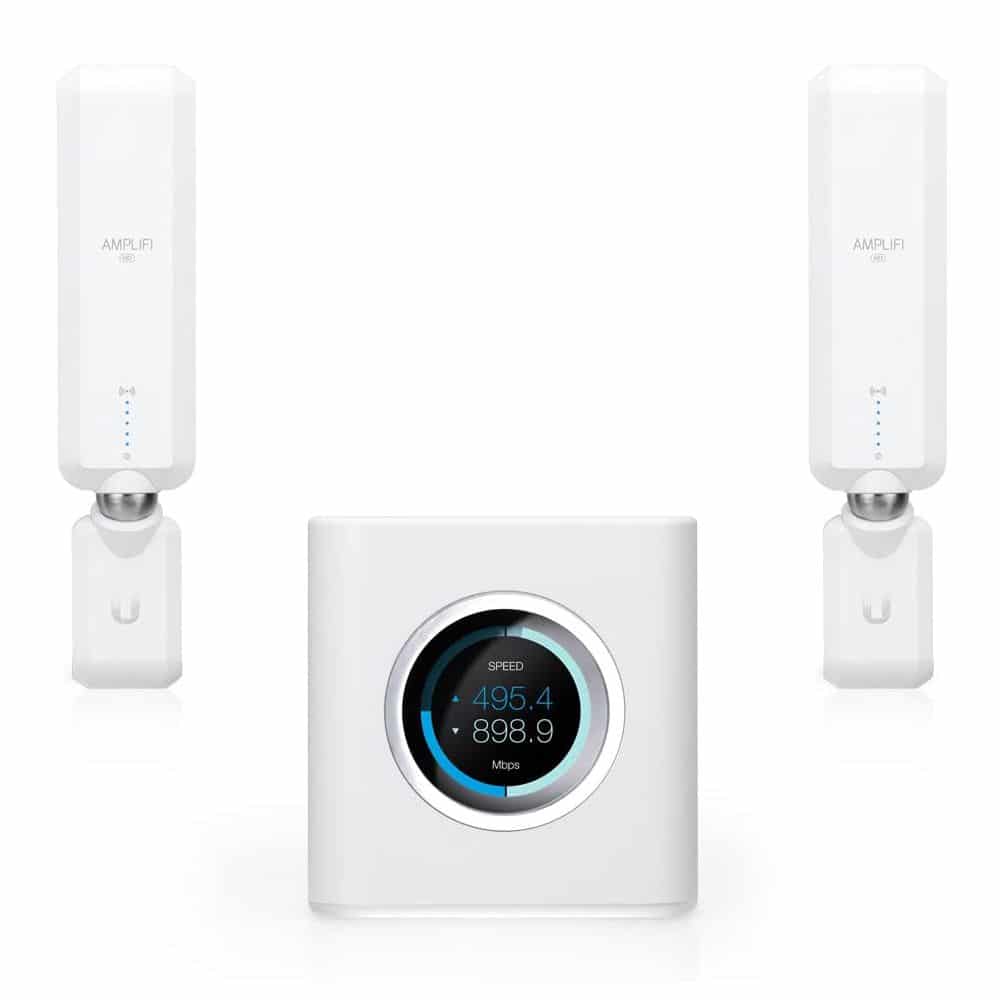Up until as recent as 2018 the idea of “mesh” WiFi systems were still just a concept for some. For others it wasn’t even something that they knew existed. Nowadays it seems that every network equipment manufacturer has jumped on the mesh WiFi bandwagon in 2022. Some work OK; others have the connection stability of a carrier pigeon, but only one manufacturer appears to be victorious in the race for creating the best mesh WiFi system.
Before I reveal the winner… wait, was there a race? No, but yes, because there’s always a race when it comes to innovation. The race wasn’t spurred on by the leader, it appears to have been created by the followers.
This is not a sprint, not is it a triathlon, it’s a race for longevity in the mesh WiFi market.
Let me explain. A company produces a proof of concept that blows most of what experts thought they knew out of the water as far as wireless networks are concerned. In an uncalled reaction, every other network equipment manufacturer jumps up and produces its own interpretation of how it thinks this proof of concept works.
Really, most of the followers in this instance based their systems on traditional WiFi repeater technology. A simple system with two radios, one for the up-link and one for broadcast. This meant that speed and coverage was compromised.
You give WiFi a bad name!
For a few years, mesh WiFi systems were given a really bad name as a result of the competition doing such a bad job at trying to copy what is a wonderful technology. This was mostly down to the fact that these inferior systems utilised the broadcast radios for client connections.
What does that mean?
That means that when you connect, say, your mobile phone to such a “mesh” WiFi system, it is directly competing with every other device trying to connect (which is expected) as well as compromising the up-link speed more and more with every additional device.

Bear in mind that radio communications (such as WiFi) still rely on single packets of data being sent and received very quickly – within microseconds – between access points and stations. If you clutter the airways, it inevitably induces delays.
What’s the best mesh WiFi system then?
What the leading manufacturer did to perfect their true mesh WiFi system was to cram in as many wireless radios as possible. This gave their devices 360-degree coverage over longer distances as well as providing for a dedicated wireless backbone.
What is a dedicated wireless backbone, I hear you ask. Basically, that means that the mesh WiFi access points create between themselves an invisible multi-hop wireless network for configuration, up-linking and down-linking.

This dedicated wireless backbone even gives the options of switching between higher speeds using 5GHz or larger coverage using 2.4GHz radios.
To top it all off, there is a dedicated wireless radio for client device connections. A dedicated three-hundred-and-sixty degree, high-density radio. Or radios (plural) as it provides both 2.4GHz and 5GHz connectivity.
Enough with the specs, what is the best mesh WiFi system in 2022?
Ok, I’ve gone a little off track. The system in question is none other than Ubiquiti Networks’ AmpliFi system. Ring any bells?
For most it won’t. A lot of people have heard of Amazon Eero, Google WiFi or Devolo; ISPs such as British Telecom even produce their own multi-hop WiFi system.
AmpliFi really has this mesh WiFi game dialled in. But wait, there’s more!
It’s very versatile. There’s even a gaming-dedicated low latency version (which comes in black with green LEDs everywhere).
Really, AmpliFi is a hybrid-wired-mesh WiFi system. For instance, the AmpliFi routers can be used as wireless mesh points, or hard-wired access points that double up as mesh points or as standalone WiFi access points. The strictly wireless mesh points can be paired to an AmpliFi router or even used as a standalone WiFi repeater for non-AmpliFi equipment.
We’ve tested extensively the combination of AmpliFi equipment that works well together and no matter what we throw at it, the feedback we’ve received to date is that it just works.
Here’s a little case study
The most complicated AmpliFi mesh WiFi system we’ve installed consists of a main high-density router at the heart of the system, which is hard-wired to three instant routers and two wireless mesh points.
Our client’s main requirements were that he wants to be able to have the same download speeds throughout the entire house, seamless roaming for those pesky Zoom video conferences that keep interrupting your coffee breaks and provide strong enough external signal to connect his four external Nest WiFi cameras.
The system took about 1 hour to configure and install (there was pre-existing cabling!) and after the first couple of weeks we heard nothing but praises for the AmpliFi system. He is no longer experiencing video calls dropping, all of his cameras are connected with high quality video feeds and the download speed is the same in every room of the house.
Here’s another case study
The most out-of-this-world mesh WiFi system we’ve installed was to create a wireless link between two buildings about 150-feet apart.
In the house was a pre-existing AmpliFi system with a high density router and four wireless mesh points that we installed in 2018. We added to this a 5th wireless mesh point in an IP-rated box in the garden where their electrician had run power for us. We then installed a WiFi-ethernet bridge in the other building, connected to a network switch.
We’ve even extended this system using some of Ubiquiti’s Unifi access points as standalone devices into a third building on the property.
This wireless connection had been in place for just over 2 years until a recent upgrade to Ubiquiti’s AirMax point-to-point equipment for increased speed following an FTTP upgrade.
Needless to say, this little wireless mesh system has outperformed what it says on the box. It reaches nooks and crannies of houses that previously didn’t know it needed WiFi connectivity. Its versatility means we can specify it as a new install or retrofit system without compromising on speed or coverage.
More and more manufacturers are still producing their own mesh WiFi systems, but for us, Ubiquiti AmpliFi is king!
